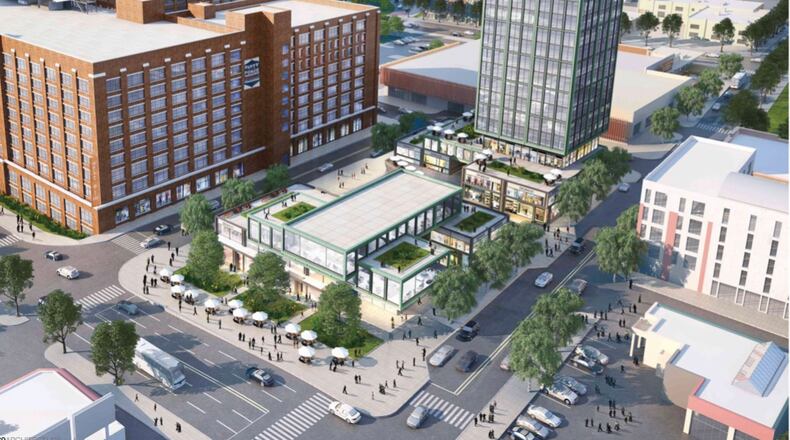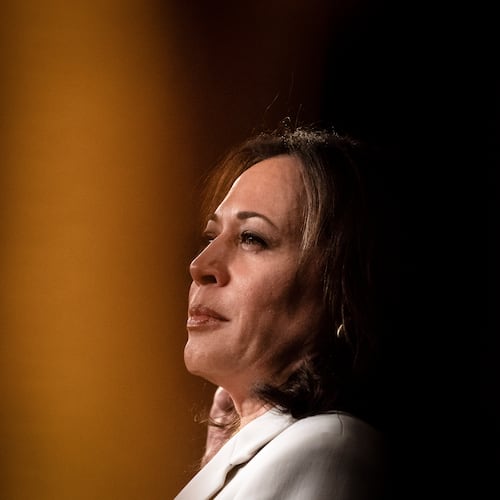A state-funded academy to train Amazon’s employees. An exclusive lounge - with free parking - at the world’s busiest airport. An Amazon-dedicated car on MARTA. And more than $2 billion worth of publicly-funded incentives.
That was a glimpse of the package of incentives Georgia offered to Amazon to try to lure the Seattle-based giant’s second headquarters, what was supposed to be a $5 billion campus with as many as 50,000 jobs.
Though Atlanta made a short-list of finalists, it wasn't meant to be. The company split the project into two smaller sites, one that went to northern Virginia and the other to New York. Georgia also missed out on the biggest consolation prize – a 5,000 job operations center that went to Nashville.
For more than a year, the incentives dangled by Georgia recruiters were a closely-guarded state secret thanks to a state law that shielded them from the public. But that changed late Tuesday when the state disclosed its full package for the first time.
Here’s what we learned:
Incentives
The total incentive package would have topped $2 billion. It would have included $1.3 billion in “mega project tax credits,” a $320 million sales tax break for construction materials, and a $100 million direct investment in the headquarters site.
One of the components would have been an on-site "Amazon Georgia Academy" operated with the help of the University System of Georgia and the state tech college system. The price tag was listed as "incalculable/TBD" by state officials.
It would have offered a 24-week boot camp program for staffers, undergraduate and post-graduate coursework, and state-sponsored recruiters to help fill the company’s jobs. The state would pay to build the academy and pick up the first five years of operating costs – including salaries of professors and recruiters.
At least $87 million in additional local tax credits were on the table from the city of Atlanta, including a $25 million grant from the city’s economic development arm. The city touted another $2.2 billion in infrastructure investments – such as parks, watershed and Beltline paths – near possible sites.
To entice Amazon to move to the sprawling Gulch overhaul in downtown Atlanta, the project’s developer – CIM Group – also committed to transferring to Amazon about $8 million in credits from the Westside Tax Allocation District.
Other perks
This is where it gets more interesting. The state proposed an exclusive lounge at Hartsfield-Jackson International Airport for Amazon executives, along with 50 free parking spots. And the firm developing a nearby hotel offered a plot of land for an “Amazon Experience Center” near the sprawling airport.
To allay concerns about Atlanta’s gridlock, the state said MARTA would consider adding an Amazon-dedicated car “to distribute products around the city.”
And Amazon was promised opportunities to rename city streets around its new campus – "Alexa Way" and "Prime Place" were among the examples.
Amazon Love
The state tried to butter up Amazon with a long list of the company's connections in Georgia that included investments it made in metro Atlanta firms. "Simply put," the section read, "Atlanta has a long history of Amazon love."
Sites
The initial slate of potential sites included many familiar places – and some others not previously known to be aggressively pitched. The Lockheed/Dobbins region in Cobb County was one, the Infinite Energy Center in Gwinnett another.
A lengthier list included more than 60 sites, including some in exurban and rural areas.
A second, more detailed proposal submitted earlier this year narrowed in on four areas: Downtown, Midtown, the Old Fourth Ward and the Quarry Yards on the Westside. Each had detailed renderings of proposed construction and ambitious new amenities.
The Midtown site plan, for instance, suggested a new park spanning across the Downtown Connector around Woodruff Arts Center or jutting out near Georgia Tech to connect the company's sprawling complex of towers.
The Westside renderings had a string of low-lying office buildings in a lush, verdant campus near Bellwood Quarry, while the downtown version focused in part on a cluster of aging buildings south of Broad Street. The pitch: “Revitalizing Atlanta’s first building blocks.”
The vision for Old 4th Ward, meanwhile, involved a series of glass-covered towers built in the shadow of Ponce City Market or other nearby stretches that hug the Beltline.
The Visit
The documents outline for the first time the itinerary of the Amazon delegation's ill-fated visit to Georgia, which came as lawmakers debated a contentious adoption measure and scuttled a tax break for the state's largest private employer.
About the Author
The Latest
Featured




